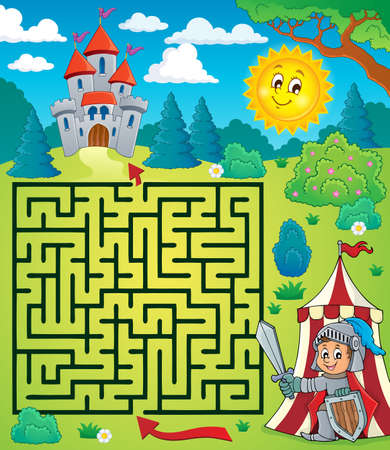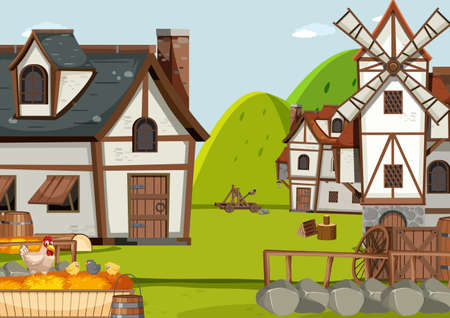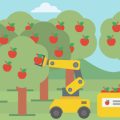1. Understanding Squirrel Behavior and Challenges
If youre trying to protect your fruit trees and bird feeders from pesky squirrels, the first step is understanding what makes these critters tick. Squirrels are clever, agile, and highly motivated when it comes to finding food—especially in suburban and urban areas where natural sources may be limited.
Why Are Squirrels Attracted to Fruit Trees and Bird Feeders?
Squirrels are opportunistic feeders. This means they’ll take advantage of easy meals wherever they find them. Fruit trees offer sweet, nutrient-rich snacks, while bird feeders provide a consistent source of seeds, nuts, and suet. These are all irresistible to hungry squirrels—especially during times when food is scarce.
Main Attractions for Squirrels
| Attraction | Why Squirrels Love It |
|---|---|
| Fruit Trees | Fruits like apples, peaches, plums, and cherries are high in sugar and energy. |
| Bird Feeders | Full of seeds and nuts that squirrels naturally eat in the wild. |
| Suet Cakes | High-fat content makes them perfect for winter energy needs. |
Common Squirrel Behaviors Around Feeders and Trees
Squirrels are known for their persistence. They can jump up to 10 feet horizontally and climb almost any surface. You might notice them chewing through plastic parts of feeders or stealing unripe fruit straight off the branch. Theyre also excellent problem-solvers, often figuring out how to bypass baffles or guards over time.
Behaviors to Watch For
- Gnawing: Squirrels chew on wood, plastic, and even metal to access food.
- Burying food: In fall, they stash extra food for winter.
- Nesting: Sometimes they build nests (called dreys) in nearby trees, increasing activity around your yard.
- Aggression at feeders: They may scare off birds to claim the feeder as their own.
The Seasonal Nature of Squirrel Activity
Squirrel behavior changes throughout the year. Understanding these seasonal shifts can help you plan better protection strategies. For example, during spring and summer, theyre more active due to breeding season and raising young. In fall, their feeding frenzy peaks as they prepare for winter. Winter activity slows down but doesnt stop entirely—especially on warmer days.
Squirrel Activity by Season
| Season | Activity Level | Main Behaviors |
|---|---|---|
| Spring | High | Nesting, feeding young, foraging fresh growth |
| Summer | Moderate-High | Harvesting fruits, maintaining territory |
| Fall | Very High | Burying food caches, heavy feeding before winter |
| Winter | Low-Moderate | Eats stored food, occasional visits to feeders on warm days |
By understanding what drives squirrel behavior—and when—they’re most active around your yard, youll be better prepared to implement effective squirrel-proofing strategies in the next steps.
2. Physical Barriers and Tree Modifications
If youre tired of watching squirrels raid your fruit trees or bird feeders, physical barriers and tree modifications can be a game-changer. These methods create real obstacles that make it much harder—or even impossible—for squirrels to reach their favorite targets.
Baffles: A Must-Have for Feeders
Baffles are dome- or cone-shaped devices that you attach above or below bird feeders. They spin or tilt when a squirrel tries to climb over them, making it nearly impossible for the critters to get past.
Types of Baffles and Their Placement
| Type | Placement | Best For |
|---|---|---|
| Dome Baffle | Above feeder | Hanging feeders |
| Cone Baffle | Below feeder on pole | Pole-mounted feeders |
| Torpedo Baffle | On pole under feeder | Sleek poles with no branches nearby |
Trunk Guards: Keep Squirrels Grounded
A simple way to stop squirrels from climbing fruit trees is by installing trunk guards. These are smooth metal or plastic bands wrapped around the trunk about 5–6 feet above the ground. The slick surface prevents squirrels from getting traction.
Tips for Effective Trunk Guards
- Use materials like aluminum flashing or smooth PVC pipe.
- Ensure the guard is at least 18 inches tall.
- Leave space between the guard and tree bark to prevent damage.
- Check periodically to adjust as the tree grows.
Pruning Techniques That Work Against Squirrels
Squirrels are agile jumpers, often leaping from nearby branches or structures onto your trees or feeders. Strategic pruning can eliminate these launching pads and reduce access.
Key Pruning Guidelines:
- Trim back any branches within 8–10 feet of rooftops, fences, or power lines.
- Remove low-hanging limbs that make it easy for squirrels to climb up.
- Keep the canopy open to reduce cover and hiding spots.
Combine Strategies for Best Results
No single method will completely stop determined squirrels, but combining baffles, trunk guards, and proper pruning can dramatically reduce visits. It’s all about making your yard less inviting and more challenging for these furry invaders.

3. Feeder Placement and Design Tricks
When it comes to keeping squirrels away from your bird feeders and fruit trees, smart placement and clever feeder design can make a big difference. Squirrels are excellent jumpers and climbers, so the key is to make access as difficult as possible without scaring off your feathered visitors.
Strategic Feeder Placement
Squirrels can leap horizontally up to 10 feet and vertically about 4 feet, so distance is your friend. Place feeders at least 10-12 feet away from fences, roofs, or overhanging tree limbs. Hang them on poles that are at least 6 feet tall and use baffles to prevent climbing from below.
| Placement Area | Squirrel Risk Level | Recommended Action |
|---|---|---|
| Near trees or roofs (within 6 ft) | High | Move feeder further away |
| Mounted on wooden fence | Medium | Add baffles or relocate |
| On a metal pole in open area | Low | Ideal placement with baffle |
Squirrel-Resistant Feeder Designs
Selecting the right feeder is just as important as where you put it. Many modern bird feeders come with squirrel-proof features built in. Look for designs that close access to seed when a heavier animal (like a squirrel) climbs on.
Popular Squirrel-Proof Features:
- Weight-activated perches: Shuts seed ports when squirrels land.
- Caged feeders: Birds can access food through small openings; squirrels cant fit.
- Baffled pole systems: Discourages climbing from below.
- Dome covers: Prevents squirrels from descending from above.
Avoid Common Mistakes
Avoid hanging feeders from thin branches or string alone—squirrels can chew through them. Also, dont rely solely on spicy birdseed blends; some squirrels still brave the heat. Instead, combine smart design with strategic placement for best results.
4. Natural and Repellent Methods
When it comes to keeping squirrels away from your fruit trees and bird feeders, using natural deterrents is a safe and eco-friendly approach. These methods focus on smells and substances that squirrels dislike but are harmless to birds, pets, and other wildlife.
Scents That Squirrels Avoid
Squirrels have a strong sense of smell, which makes scent-based repellents particularly effective. Here are some scents that can help keep them at bay:
| Scent | Description | Application Tips |
|---|---|---|
| Peppermint Oil | A strong minty scent that squirrels find overwhelming. | Soak cotton balls in peppermint oil and place near feeders or around tree trunks. |
| Cayenne Pepper | The spicy component irritates squirrels noses and mouths. | Sprinkle on the ground around trees or mix with birdseed (birds aren’t affected). |
| Garlic Spray | A pungent odor that squirrels dislike. | Blend garlic with water, strain, and spray on tree bark or feeder poles. |
| Vinegar | Its sharp smell can deter squirrels from hanging around. | Use vinegar-soaked rags or spray diluted vinegar around problem areas. |
Natural Substances & DIY Repellents
You can also make homemade squirrel repellents using ingredients found in your kitchen. These are non-toxic options that won’t harm birds or beneficial insects.
- Hot Pepper Spray: Mix 1 tablespoon of cayenne pepper, 1 quart of water, and a few drops of dish soap. Spray this mixture on tree branches and feeder poles. Reapply after rain.
- Citrus Peels: Scatter orange or lemon peels around the base of trees. The strong citrus scent is unpleasant to squirrels.
- Coffee Grounds: Used coffee grounds can be spread around your garden or tree base. The scent deters squirrels while enriching the soil.
Commercial Natural Repellents
If you prefer ready-made solutions, there are several commercial products made from natural ingredients that are safe for wildlife:
| Product Type | Main Ingredients | How It Works |
|---|---|---|
| Spray Repellents | Peppermint oil, capsaicin (hot pepper), garlic extract | Create an unpleasant taste or smell barrier for squirrels |
| Granular Repellents | Dried blood meal, essential oils, natural spices | Sprinkled around trees and feeders to form a scent deterrent zone |
Tips for Best Results
- Rotate repellents regularly to prevent squirrels from adapting.
- Avoid overusing spicy sprays directly on plants; test small areas first.
- Combine repellent methods with physical barriers for stronger protection.
5. Squirrel Feeding Zones: A Diversion Tactic
If youre battling squirrels invading your fruit trees or raiding your bird feeders, one clever strategy is to set up designated squirrel feeding zones. By giving squirrels their own buffet, you can encourage them to stay away from the areas you want to protect.
Why Create a Squirrel Feeding Zone?
Squirrels are persistent and smart. If they’re hungry, they’ll find a way to get what they want—even if it means outsmarting squirrel-proof bird feeders or climbing over tree guards. Giving them an easier food source in a different location can reduce their motivation to go after your prized fruit or expensive bird seed.
What to Include in a Squirrel Feeding Zone
You don’t need anything fancy—just a simple area in your yard that’s far enough from your trees and feeders. Here are some foods that squirrels love:
| Food | Why Squirrels Like It |
|---|---|
| Unsalted peanuts (in the shell) | Fun for squirrels to crack open; high energy |
| Corn on the cob | Easy to mount and keeps squirrels busy |
| Sunflower seeds | A favorite snack, especially black oil variety |
| Chopped apples or carrots | A healthier option with natural sweetness |
Tips for Placement
- Place feeding stations at least 20–30 feet away from fruit trees and bird feeders.
- Use ground-level trays or low platforms—squirrels don’t need elevated spots like birds do.
- Keep the area consistent so squirrels learn where their food source is.
Bonus Tip:
Add a few squirrel-friendly toys like logs or small branches for climbing fun. The more attractive the space, the more likely theyll stay there instead of invading other areas.
6. Ongoing Maintenance and Monitoring
Keeping squirrels away from your fruit trees and bird feeders isnt a one-and-done job. To make sure your squirrel-proofing efforts continue to work over time, its important to stay on top of regular maintenance and make adjustments as needed throughout the year.
Why Regular Checks Matter
Squirrels are clever and persistent. Even the best defenses can wear down or be outsmarted over time. That’s why it’s important to inspect your setup every few weeks. Look for signs of damage, weak spots in barriers, or areas where squirrels may have found a way in. By catching these issues early, you can fix them before they become bigger problems.
Adjusting with the Seasons
Each season brings different challenges when it comes to squirrel-proofing. Here’s what to watch out for:
| Season | Challenges | Recommended Actions |
|---|---|---|
| Spring | New growth on trees may create bridges for squirrels | Trim branches regularly; check for new access points |
| Summer | Increased food sources; more squirrel activity | Inspect barriers weekly; ensure feeders are secure |
| Fall | Squirrels storing food for winter may become more aggressive | Add extra protection around fruit trees; limit feeder availability if needed |
| Winter | Squirrels may chew through materials looking for food | Use durable materials like metal; monitor for gnawing damage |
Reinforce and Upgrade as Needed
If you notice that squirrels are getting past your current defenses, don’t be afraid to upgrade. Consider switching to stronger materials, adding motion-activated deterrents, or relocating feeders and traps. Reinforcing your barriers helps maintain long-term success and saves time in the future.
Quick Tips for Ongoing Success:
- Keep tree branches trimmed: Especially those close to roofs or fences.
- Clean up fallen fruit and seeds: Don’t give squirrels a reason to come back.
- Secure all hardware: Make sure screws, hooks, and mesh are tight and rust-free.
- Monitor squirrel behavior: If they’re getting smarter, so should your strategy.
A little bit of ongoing effort goes a long way in keeping squirrels at bay. With regular checks and seasonal adjustments, you’ll keep your fruit trees and bird feeders safe all year long.


